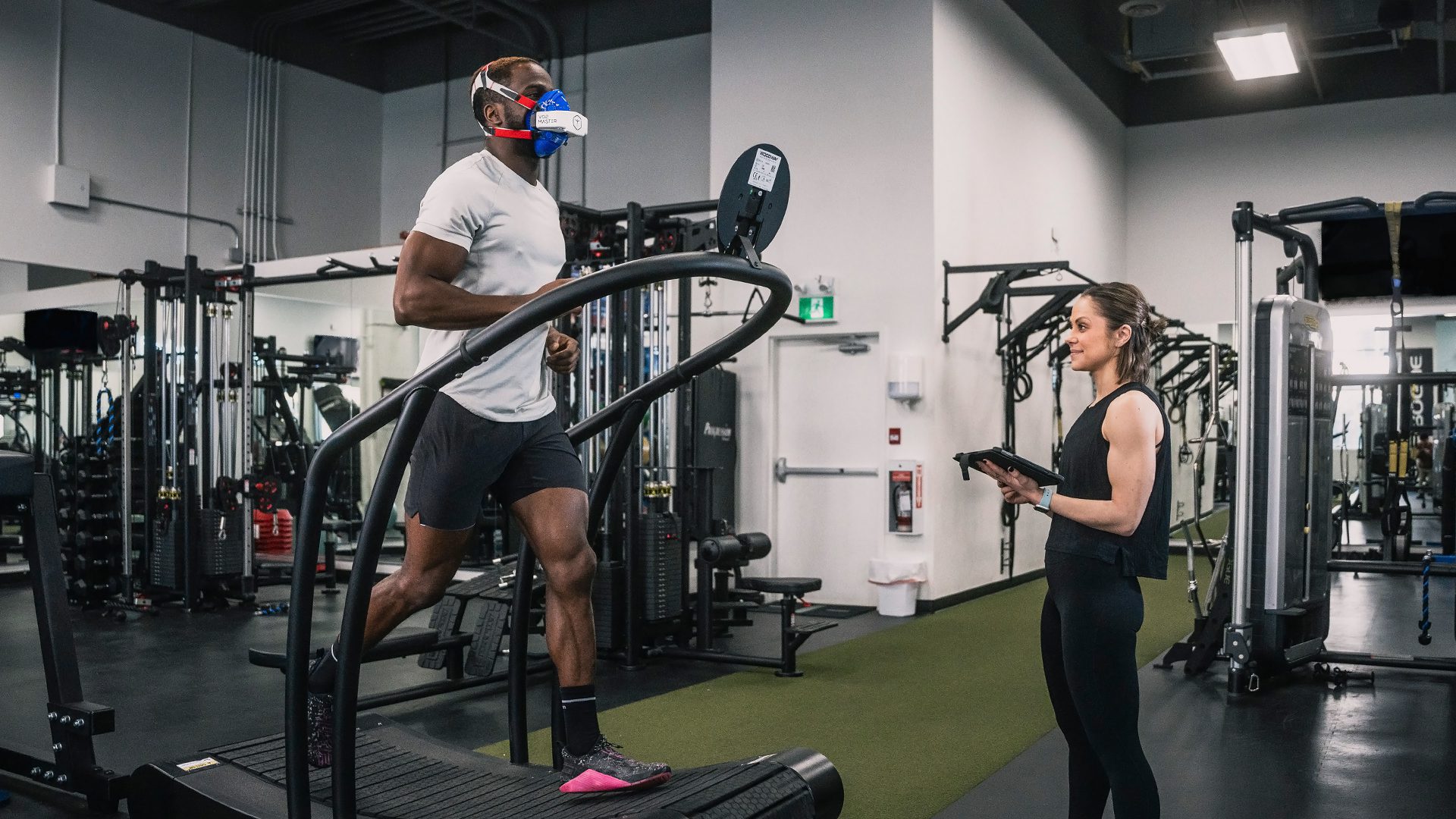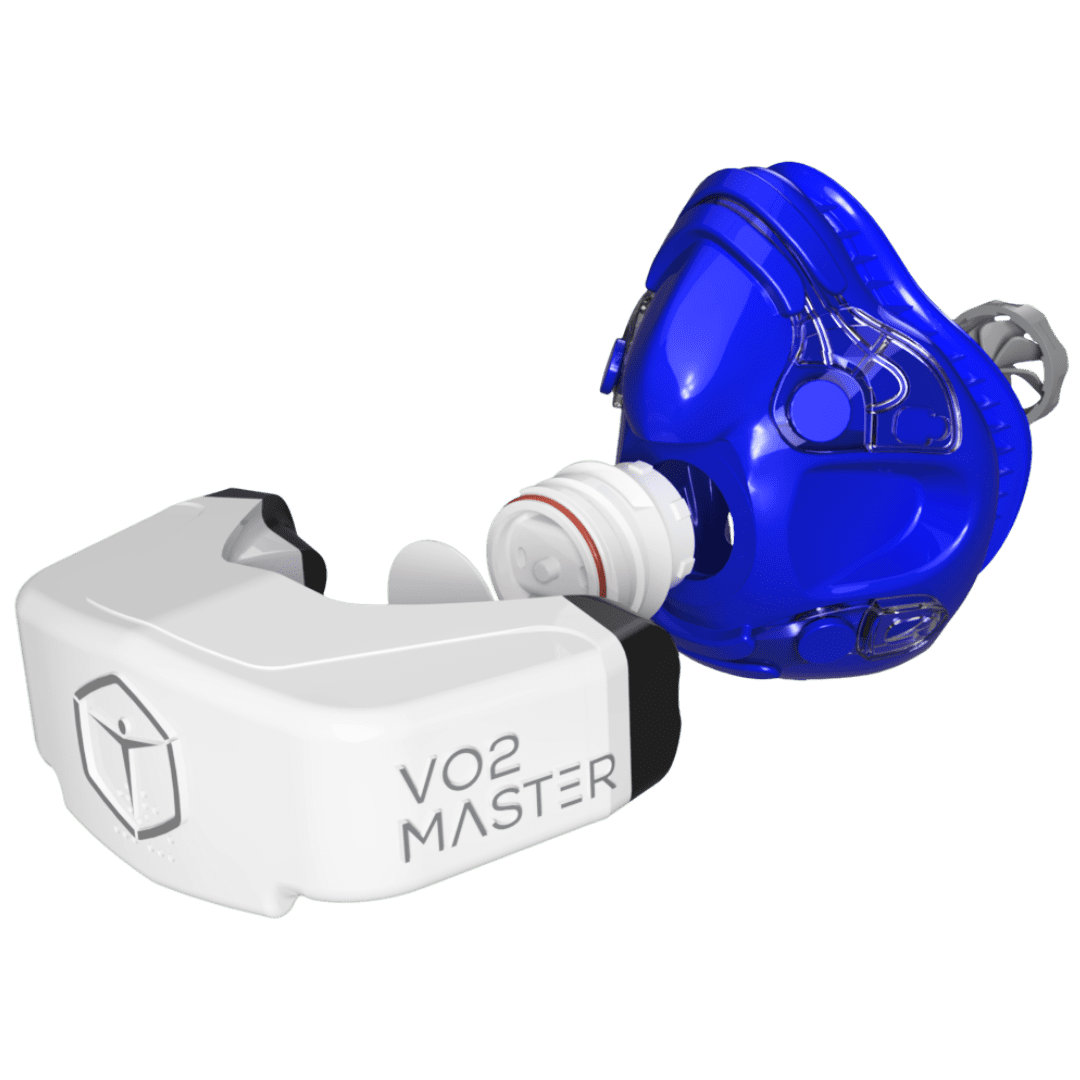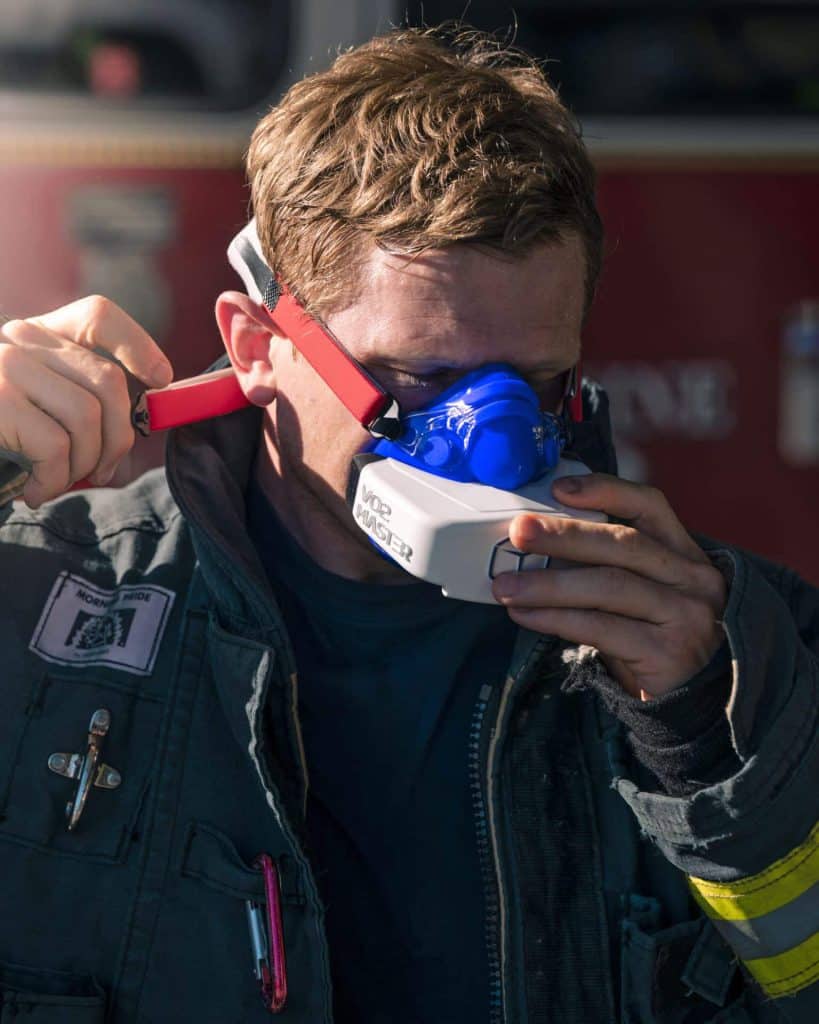VO2 Master Validation Athlete Case Study by DU Kan Auka
We are excited to present an in-house study by DU KAN AUKA where they tested the VO2 Master Analyzer on a former elite athlete.

We are excited to present an in-house study by DU KAN AUKA where they tested the VO2 Master Analyzer on a former elite athlete.
First to assess repeatability from:
- Consecutive testing of the same analyzer.
- Comparison of measurements from several VO2 Master analyzers.
Secondly, to assess the accuracy of the VO2 Master against itself and the Vyntus metabolic cart.

A quick summary of the setup
Test subject
A 36 year old male former elite triathlete. Weight 86.5 kg. VO2 Max of around 70 ml/min/kg or 6000 ml/min.
Test Protocol
We used the standard graded exercise test program of the VO2 Master, set with 3 minute intervals of increasing load.
For running we used a woodway treadmill, the warm up was set to 1.7% inclination and speed of 10 kph, we then increased the speed by 2 kph every 3 minutes to a maximum of 18 kph.
On the cycle tests, we used a wattbike. Warm up at a load of 200 W increasing by 30 W on each interval to a maximum of 380 W.
Test days
The cycle tests were performed on July 14th and 17th, and again September 3rd, 2023. July 14th, we tested two different VO2 Masters ( VM 1 and VM 2), on July 17th we re-tested VM2. In September we had access to two new analyzers and decided to perform the same cycle test on them (VM3 and VM4).
The running tests were performed on February 21st and March 9th, 2024. On the 21st we used the same analyzer as in one of the previous tests (VM1) and the Vyntus metabolic cart, March 9th we tested another VO2 Master (VM 5).
Calibration of the VO2 Master
The O2 sensor is very close to the highly inhomogeneous airflow of your breath, and the difference in humidity and temperature between the ambient air become more prominent in a portable device. The calibration of the VO2 Master is therefore crucial to get reliable results.
We calibrated the VO2 Master by performing the flow and O2 calibration before start. In addition, we have to take into account that the heat and humidity of the test subjects’ breath will change the environment near the sensors during the initial stages of the test. After 5 minutes of the warm-up, we re-calibrate the O2 sensor with the manual calibration while the athlete is wearing the mask. We do not remove the VO2 Master after this point.
Repeatability
A test of repeatability by comparing the data from 4 different VO2 Master analyzers.

In Figure 1) we show the VO2 data from all 5 tests on the wattbike. All tests start at around 35 ml/min/kg or 3000 ml/min and end at 66-68 ml/min/kg or approx. 6000 ml/min. To assess the data, we have to take into account that we tested a single athlete 2 times per day, and that there was roughly 7 weeks between the two test-periods. We will now look more closely at each set of results.

In Figure 2 we compare the VO2 results from VM1 and VM2 on day 1 and we show the heart rate data to illustrate the increased internal load between tests. The test subject reported feeling more ready on the second test. We can also see from the test that although the VO2 values are higher throughout the second test that is consistent with the higher heart rate. The highest measured VO2 per 30s was 5746 ml/min by VM1 and 5904 ml/min on the second test of VM2.

The tests on July 14th and 17th are close enough that the performance of the athlete should be comparable. In Figure 3) we compare the first test on the 14th (VM1) with the test on the 17th (VM2 test 2). The VO2 data is clearly consistent between tests. In these tests we also see a slightly higher heart rate from day 1 to day 2 although lower than the second test on day 1, illustrated by the red graph.

In Figure 4, we present the comparison of VO2 data gathered on September 3rd. The VO2 data on this day was closer than on the test on July 14th (Figure 2). This difference may be due to the longer break, roughly 15 minutes difference, between tests. It is also worth noting that the performance of the athlete overall was better, reaching a slightly higher VO2 max around 68 ml/min/kg compared to 66 ml/min/kg from the tests in July. The athlete was also able to hold 380 Watts about a minute longer.

Accuracy compared to the Vyntus
First, a brief summary of the difference between mixing chambers and portable devices
In most labs you will find a standard metabolic system with a mixing chamber, like the Vyntus, an important difference from the portable VO2 Master.
The purpose of the mixing chamber is to ensure that the gas you measure is homogenous, but that also smooths the data into 30s averages thereby losing important breath-to-breath information.
The primary challenge of the portable device is the relatively high flow of air near the O2 sensor. In the VO2 Master this is solved by inserting a venturi tube (user piece). To ensure that the user piece does in fact homogenize the air flow, it is crucial that the lips of the test person does not come into contact with the tube. That again is solved by choosing the correct mask size, and by ensuring that the mask is positioned correctly. If done correctly the portable devices gives important insights into breath-to-breath data, and perhaps most importantly, you can measure in the field.
Now the results of the running tests and the comparison to Vyntus
In the running tests in February and March we had the option to compare results to the Vyntus metabolic cart, a stationary lab system. The results are shown in Figure 5).

The data between the two VO2 Master analyzers can be seen to align very well between the two days. The Vyntus gave slightly higher VO2 measurements from approx. 5 to 10 minutes. At higher intensity the results were very close. The maximum on each dataset was reached at 16 kph for VM1 and VM5, and at 18 kph for the Vyntus. The VO2 Max was measured remarkably close at 6206 ml/min, 6214 ml/min and 6245 ml/min respectively, around 72 ml/min/kg.
Summary
Overall, the tests were consistent with what we can expect from testing the same athlete multiple times over multiple days. The results also illustrated the repeatability of both a single VO2 Master with itself and between different analyzers. In this study we also see that the results from the VO2 Masters was accurate compared to the Vyntus system, with almost identical results at higher loads.
